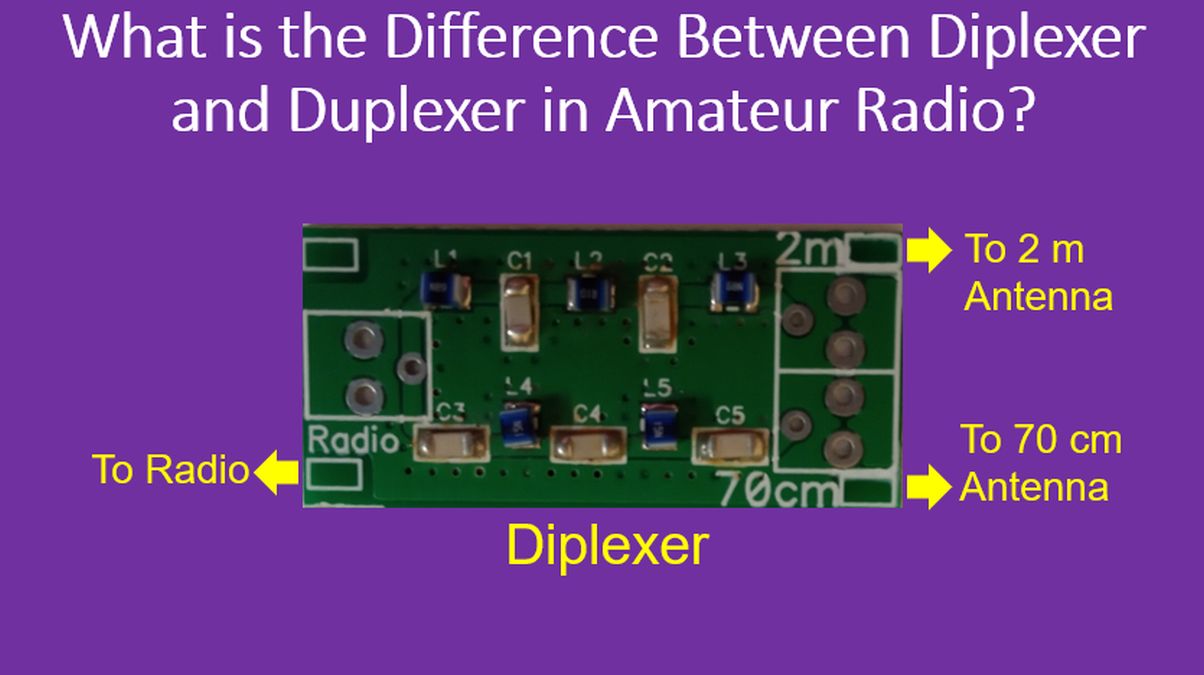What is the Difference Between Diplexer and Duplexer in Amateur Radio?
What is the Difference Between Diplexer and Duplexer in Amateur Radio?
Diplexer in amateur radio is typically used in satellite operations where two antennas are used for transmission and reception in two bands. Typical example is connection to a crosss band satellite transponder. For example, Amateur Radio on International Space Station has a voice transponder which receives on VHF (uplink) and transmits on UHF (downlink). At the ground station of the amateur radio operator, VHF antenna transmits signal and UHF antenna receives the downlink. Both antennas can be connected to a diplexer which has band pass filters. The diplexer prevents the output of the radio from overloading the front end of the receiver.

Diplexer is employed for widely different frequencies like VHF and UHF. Diplexers are usually small passive circuits made according to the power output specifications. Typical diplexer for amateur radio satellite use has a power rating of about 10 Watts and is meant for use with handheld transceivers. Diplexer can also be used the otherway round, to connect two radios to one antenna. Power rating of the diplexer has to be much higher for use with amateur radio base stations. In amateur radio satellite communications, two antennas at a spacing and two radios with two feedlines are also used if an appropriate diplexer is not available. Of course, good front end filters are needed for the receiving radio to avoid its front end being overloaded by the high output of the nearby transmitting radio, though working on another band.
Duplexers are typically used for Amateur Radio repeaters. They separate transmit and receive frequencies of the repeater based on the direction of the signal. Usual amateur radio repeaters work in a single amateur radio band like 2 m or 70 cm with only a small separation between the transmitted and received signals compared to the cross band transponders of the amateur radio satellites. As an example a typical VHF repeater has only 600 kHz spacing between the transmitted and received signals. At the same time, the transponder of ARISS receives uplink on 145.990 MHz and transmits downlink on 437.800 MHz which is quite a wide separation compared to a VHF repeater. Hence the duplexer for a repeater is a large structure known as cavity duplexer. Such a large structure is needed to isolate the two signals within the same band. As in the case of amateur radio satellite operations, two antennas at a spacing are also used sometimes with repeaters, to avoid the use of a large cavity duplexer. This could be sometimes due to the lack of availabilty of an appropriate cavity duplexer or because of undue signal loss in a cavity duplexer.